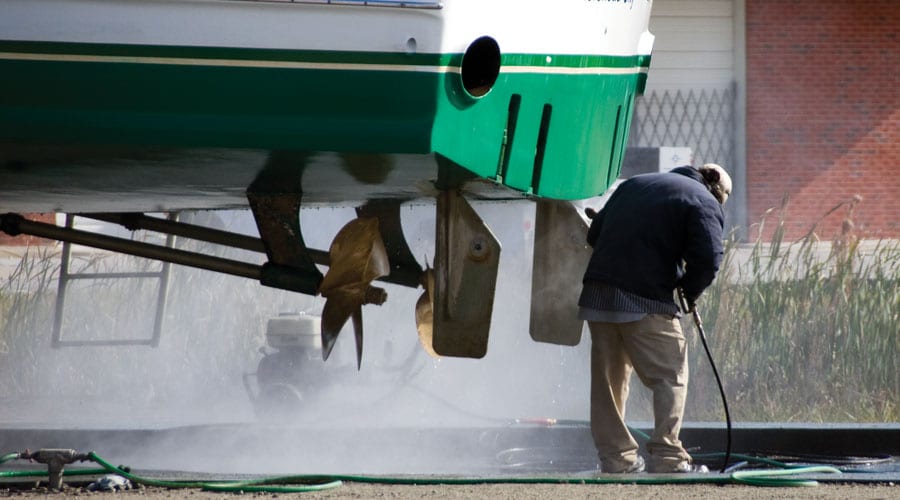We have a 53′ Fleming – which when pulled, found that it has osmosis (entire bottom). In your experience, when stripping the bottom – to include gelcoat – what type of wash do you then do to suspend the stuff coming out? On moisture meter – how low do you require it to be to put new coatings back on?
Thanks for your time ~ we’re in the NW.
– Agent Adams
Thank you for contacting us regarding your 53\’ Fleming. The 1st step in the process is the removal of the gelcoat along with the with the 1st layer of matt fiberglass.
In many cases no more fiberglass needs to be removed. The next and most important step is to not only allow the laminate to dry but to remove all of the contaminants (osmotic fluid composed of acetic, hydrochloric acid and glycol). Ideally, the boat is pressure washed with hot water or steam on a daily basis initially and then less frequently after a couple of weeks. During this stage, the moisture content and acidity of the laminate needs to be monitored. Moisture content needs to be at or below 5 on the Sovereign scale before starting the next stage.
A couple of things to keep in mind. To do the job properly, the running gear (props, shafts, struts, rudders…) will need to be removed. Also winter is the best season for the boat to dry due to lower humidity in most of the country in the winter months. Depending on the extent of the issue, I have seen boats take as long as six months to dry. The only way that the drying process can be sped up is a relatively new boat yard tool known as HotVac. Though using the HotVac will shorten the time needed for the hull to dry, it will not necessarily save on labor costs.
After the boat has dried, the hull is prepped and epoxy primer is applied. If only the matte layer of laminate has been removed, it is not necessary to put fiberglass back. An epoxy fairing filler is applied and sanded as needed. You should be in agreement with the boatyard before the job starts as to how “fair” you expect the hull to be at the end of the job. After filling and fairing has been completed, an epoxy barrier coat is applied to product specs. I recommend that 3 full coats of anti-fouling paint be applied for this initial bottom paint job and then going to the normal 1-2 maintenance coats.
Please don’t hesitate to contact me if I can be of any additional assistance.


